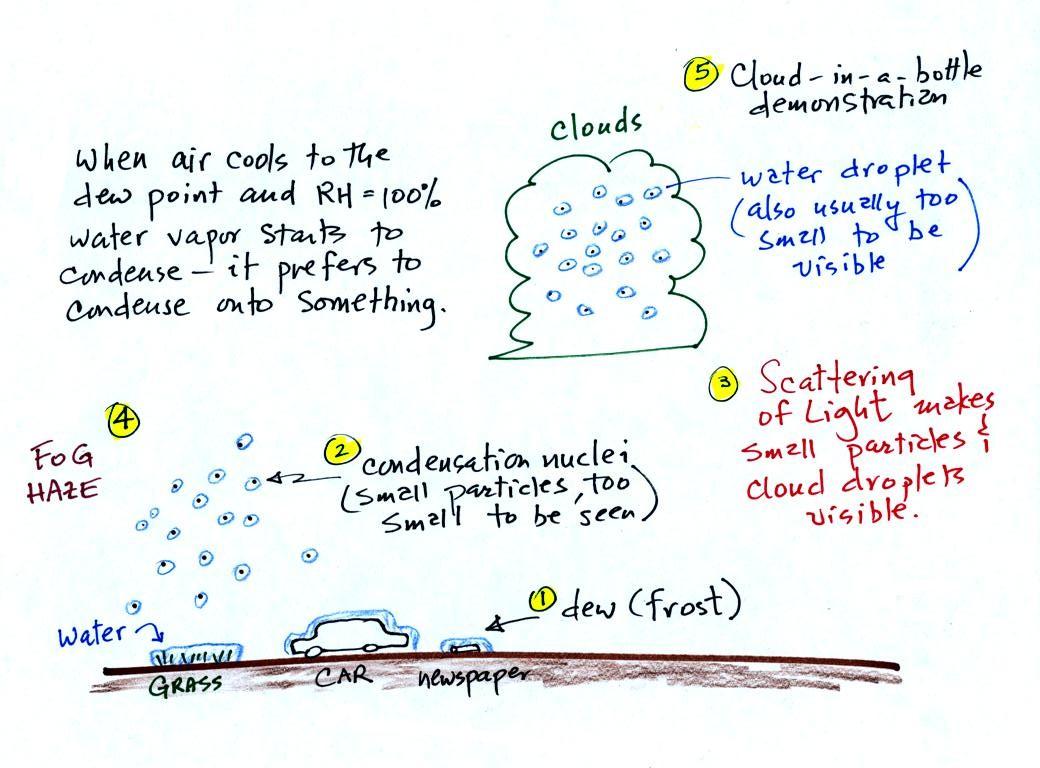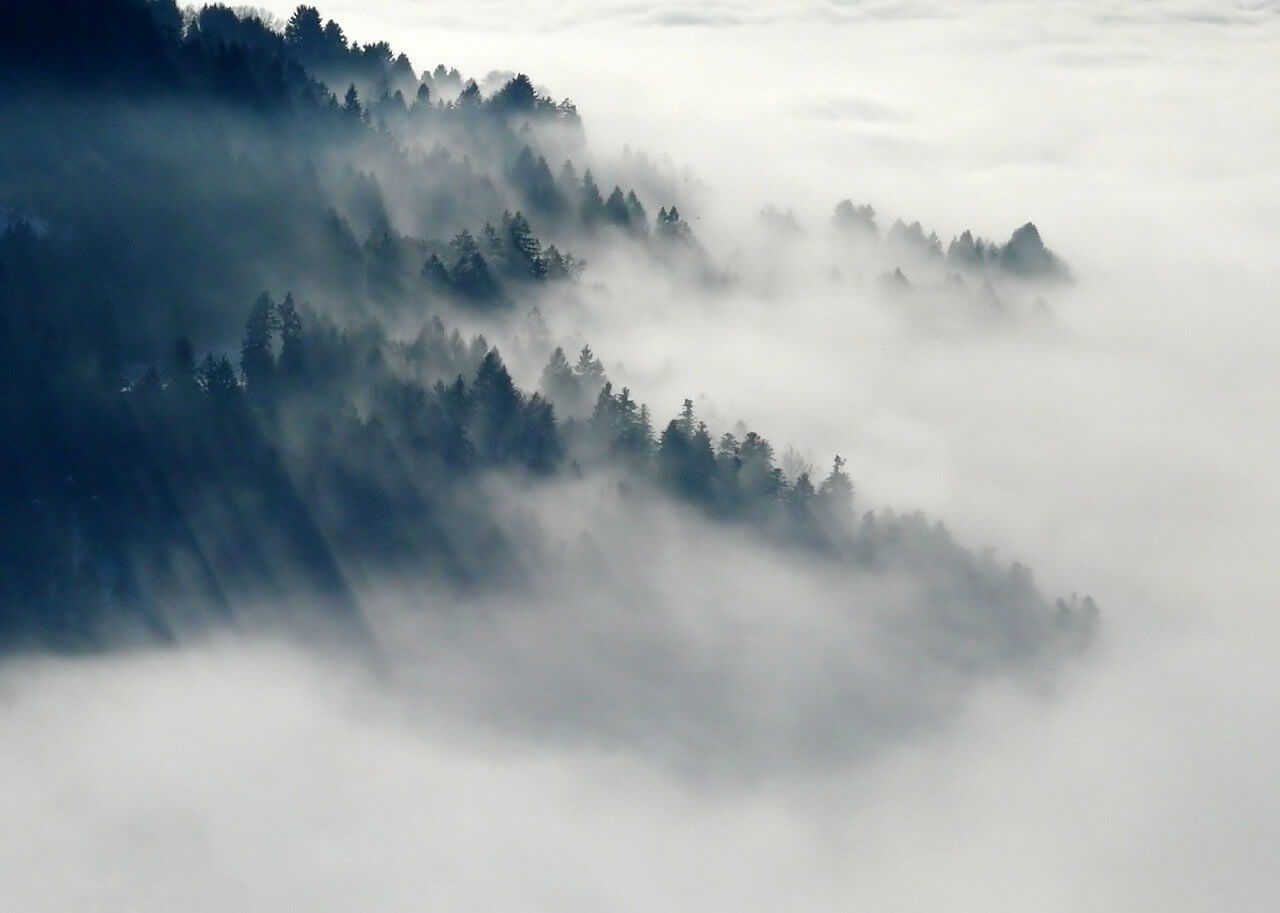Clouds Fog Or Dew Will Always Form When
Clouds Fog Or Dew Will Always Form When - Radiation = ground/valley fog, forms when radiational cooling decreases air t to dew point (d.p.) t; A pilot can expect a wind shear zone in a. Relative humidity reaches 100 percent. C) water vapor is present. Web 4 types of fog. Web clouds, fog, or dew will always form when 1. These water droplets form on tiny particles, like dust, that. Air reaches the complete saturation point. What environment is most conducive to frost formation? Which are characteristics of an unstable cold air mass moving over a warm surface.
Web the short answer: Web clouds fog or dew will always form when. Web clouds, fog, or dew will always form when water vapor condenses. Which are characteristics of an unstable cold air mass moving over a warm surface. Two conditions lead to the formation of fog. Web clouds, fog, or dew will always form when water vapor condenses. These water droplets form on tiny particles, like dust, that. C) water vapor is present. Web clouds, fog, or dew will always form when. Air reaches the complete saturation point.
Web the short answer: C) water vapor is present. The temperature and dew point are equal. Web fog usually forms in one of two ways: The correct option is a. It forms when radiative cooling of a ground surface cools the overlying air below its dew point. Web clouds, fog, or dew will always form when. As water vapor condenses or sublimates. Air reaches the complete saturation point. Which are characteristics of an unstable cold air mass moving over a warm surface.
Dew drops in the morning fog. pics
Fog types fog is often described as a stratus cloud resting near the ground. A pilot can expect a wind shear zone in a. The four families of clouds are: Web terms in this set (20) clouds, fog, or dew will always form when. Which are characteristics of an unstable cold air mass moving over a warm surface.
kmhouseindia Difference between Fog, Mist and Dew
Web clouds, fog, or dew will always form when water vapor condenses. Web clouds, fog, or dew will always form when water vapor condenses. Which are characteristics of an unstable cold air mass moving over a warm surface. Water vapor normally begins to condense on condensation nuclei such as dust, ice, and. Web clouds, fog, or dew will always form.
Weather or Not How does fog form?
Web clouds, fog, or dew will always form when 1. Web fog forms when the difference between air temperature and dew point is less than 2.5. High clouds, middle clouds, low clouds, and clouds with extensive vertical development. Web clouds, fog, or dew will always form when water vapor condenses. Relative humidity reaches 100 percent.
Clouds Weather Wiz Kids
The temperature and dew point are equal. The correct option is a. Web the short answer: Radiation = ground/valley fog, forms when radiational cooling decreases air t to dew point (d.p.) t; Fog on clear, cool nights temperature of.
Cloud formation and fog! How clouds form! How to make clouds, Flight
Which are characteristics of an unstable cold air mass moving over a warm surface. The temperature and dew point are equal. Condensation is the process through which matter transitions from its. Forms from ground up on calm clear nights fall/winter. Web clouds, fog, or dew will always form when 1.
Clouds More Than Meets the Sky Articles Features
Either the air is cooled to saturation, or sufficient moisture is added. Relative humidity reaches 100 percent. Web fog forms when the difference between air temperature and dew point is less than 2.5. Relative humidity reaches 100 percent. Web clouds, fog, or dew will always form when.
Mon., Mar. 26 notes
Relative humidity reaches 100 percent. Forms from ground up on calm clear nights fall/winter. Air reaches the complete saturation point. Web clouds, fog, or dew will always form when water vapor condenses. Web clouds, fog, or dew will always form when.
What makes fog and clouds?
Is the temperature or dewpoint spread is small and decreasing, what type of weather is most likely to occur. Water vapor normally begins to condense on condensation nuclei such as dust, ice, and. Which are characteristics of an unstable cold air mass moving over a warm surface. Web clouds, fog, or dew will always form when a. A pilot can.
1 Clouds, Fog, Or Dew Will Always Form When A. Water Vapor Condenses
A) relative humidity reaches 100 percent. Web terms in this set (20) clouds, fog, or dew will always form when. Web the short answer: Forms from ground up on calm clear nights fall/winter. Web clouds, fog, or dew will always form when.
The Temperature And Dew Point Are Equal.
Web clouds, fog, or dew will always form when 1. Fog types fog is often described as a stratus cloud resting near the ground. Relative humidity reaches 100 percent. Web clouds, fog, or dew will always form when.
Web Clouds, Fog, Or Dew Will Always Form When Water Vapor Condenses.
These water droplets form on tiny particles, like dust, that. Web clouds, fog, or dew will always form when water vapor condenses. Air reaches the complete saturation point. Forms from ground up on calm clear nights fall/winter.
Which Are Characteristics Of An Unstable Cold Air Mass Moving Over A Warm Surface.
Condensation is the process through which matter transitions from its. Water vapor normally begins to condense on condensation nuclei such as dust, ice, and. High clouds, middle clouds, low clouds, and clouds with extensive vertical development. It forms when radiative cooling of a ground surface cools the overlying air below its dew point.
Radiation = Ground/Valley Fog, Forms When Radiational Cooling Decreases Air T To Dew Point (D.p.) T;
Relative humidity reaches 100 percent. Either the air is cooled to saturation, or sufficient moisture is added. Web clouds, fog, or dew will always form when water vapor condenses. C) water vapor is present.









